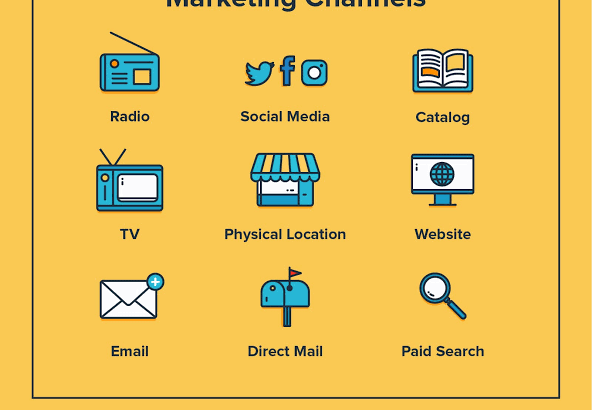One of the biggest frustrations that businesses face is lead generation.
In this guide I would show you how to go about generating leads that would convert.
We would cover the following topics:
What is a lead?
What is lead generation?
Why is it important to generate leads?
How to qualify an individual as a lead.
Finally, lead generation.
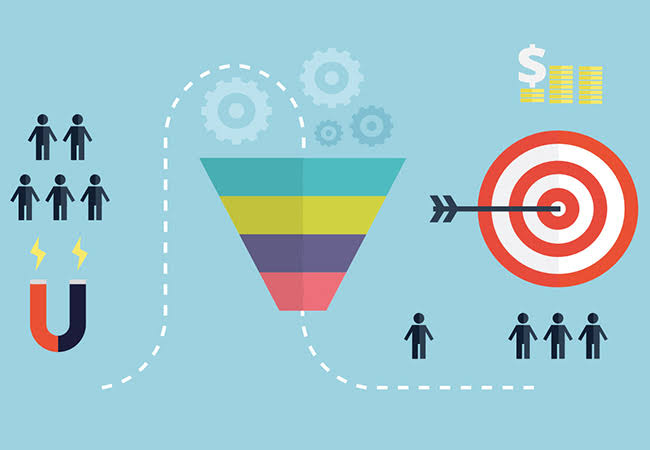
What is a lead?
A lead is anybody that is interested in buying what you are selling.
Their interest is shown when they share a contact information with you. It could be an email address, a phone number or social media handle.
Note: do not make the mistake of purchasing someone contacts and giving them a cold call out of the blues.
These kinds of leads are less likely to convert.
Depending on your department, you might have two definitions to “what is a lead?”
We would look at what a lead is from a marketer and sales person point of view.
To a marketer, quantity is king. They are more interested in how much leads they can generate rather than the quality of the lead.
This is termed as marketer’s myopia.

Marketing – Sales Conflict
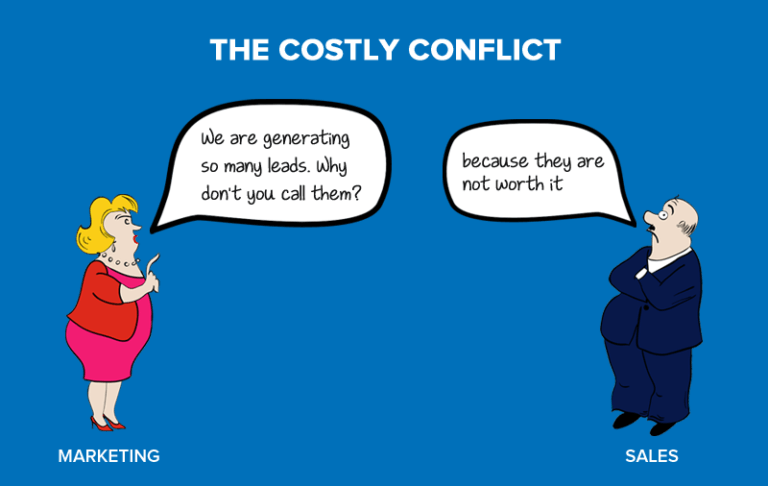
Marketers spend countless hours and resources in generating leads and in the end the sales department do not take any serious steps in following these leads.
This is bad for any business.
The aim of any business is to generate revenue. If there is so sync between the marketing and sales department, you would see a decline in revenue.
Why should this two departments sync?
- Companies that the marketing and sales department work together see an annual growth rate of 20%.
- While those that don’t work together sees a decrease of up to 4%.
- Companies that sync marketing and sales generate 208% more revenue from marketing.
As a marketer, your aim should not just be to generate leads but ensure they are also quality leads.
As a salesperson, you should regularly send feedback to the marketers concerning the quality of their leads.
Leads are very important and should not be taken lightly.
When lead generation is done right, a visitor turns into a customer.
There are different kinds of leads. It all depends on the medium through which they were converted and what life cycle stage they are in.
Read more: Complete Guide To Finding Your Target Audience
Marketing Qualified Leads (MQL)
Marketing qualified leads are individuals that have engaged with your marketing team efforts but aren’t ready to get contacted by your sales team yet.
An example of a marketing qualified lead is an individual that has filled out a contact form or a survey.
Sales Qualified Leads (SQL)
Sales qualified leads are the individuals that have taken steps that show they are ready to become customers that makes purchases.
An example is a customer that fills a form to ask about a product or your payment methods.
Product Qualified Leads (PQL)
Product qualified leads are the contacts that have used products. They then go further to indicate that they want to be paying customers.
PQL customers usually arise when you offer a free product or a free trial with an option to upgrade to the paid version.
When this customer decides to upgrade, the sales team would be contacted.
An example is a customer that uses your free trial and ask questions about a feature that is available in the upgraded version.
Service Qualified Lead
These are the customers that have indicated that they want to become paying customers.
An example is a customer that have contacted your service team that they are ready to purchase a product or upgrade from the free to paid version.
After the customer has indicated this interested, the service rep would direct them to the sales department.
Read more: Creating Business Plan: Guide For Startups & Entrepreneurs
What is lead generation?
Lead generation is the process involved in finding and then converting strangers or visitors into customers that are interested in making use of your product or service.
Some examples of lead generators includes making use of blog posts, online surveys, job applications, coupons, social media polls, live events and online content.
These generators are just some of the few ways you can prospect for leads. We would still discuss more on this later in the article.
In simple terms, lead generation is making a total stranger fall so in love with your business that they want to purchase from you.
Why is lead generation important?
Lead generation is one of the most organic ways for your business to grow.
When done right, hot leads provides your business with new client, while freeing up space for you to concentrate on other things like product development.
How fast your business grows is directly related to how fast you get new clients.
You gain the following from generating leads:
- You can determine your prices per-lead basis
- Improves and tightens your audience targeting.
- You can choose what product or service that you want to offer.
- You can control how much leads you need each month so that you don’t spend more than your budget.
- Pay for only received leads.
In inbound marketing, lead generation is in the second stage of the process.
It occurs after attracting the visitors, then converting them into leads for your sales team (sales qualified leads).
Generating leads is the foundation of turning a visitors into a delighted customer.
A happy customer would later become a promoter of your business hence generating more leads for you.
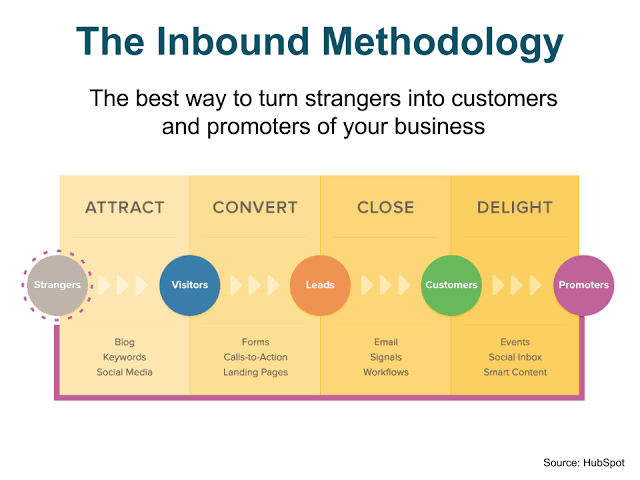
Read more: Productivity System: The Definitive Guide
Lead generation process
We have seen the stage where generation of leads comes into play in inbound marketing.
Let us check the steps involved in the lead generation process:
stage 1
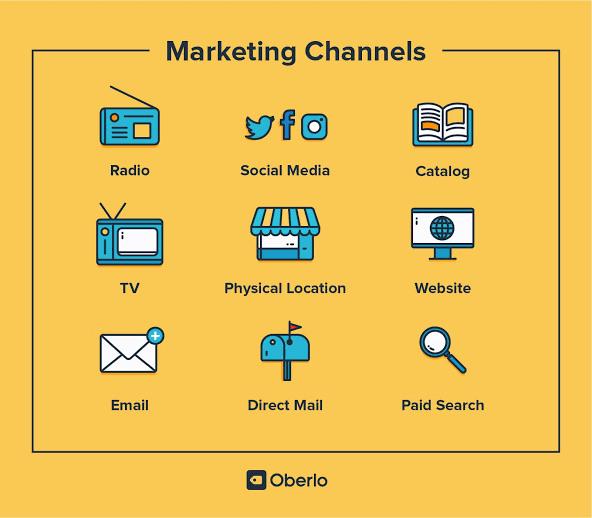
A visitor comes across your business through any of your marketing channels. This could be through blog posts, your website, or social media handles.
stage 2
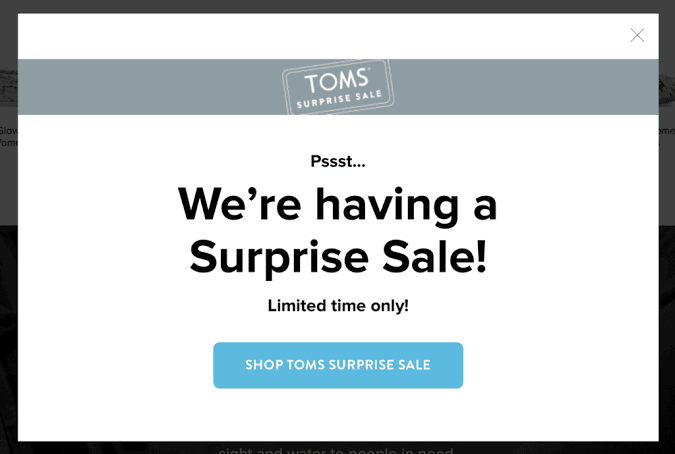
The visitors interacts with your call to action (CTA) button. This would be a message that urges the user to take an action.
stage 3
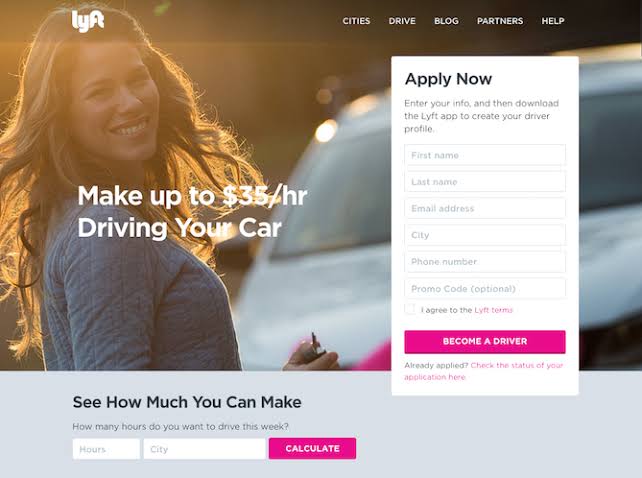
The CTA would direct the visitors to a landing web page that has been designed and optimized to convert visitors.
A landing page collects lead information in exchange for an offer. This offer could be a product or a service.
An offer should offer value. It should entice the visitors so much that they are prepared to give their contact information in exchange.
Example of offers includes eBooks, a course or a template. They would have to submit something like an email to receive it.
stage 4
When the visitors visit your landing page, they would have to fill out a form to get this offer.
This form can be embedded into your site. When this whole process is completed, you have generated a new lead.
Summary: A visitor interact with your CTA, visits your landing page, they fill out a form because they are enticed by your offer and then become a lead.
Tip: Reducing bounce rates on your website can help you generate more leads.
Lead generation marketing
The most important part of your website when it comes to generating leads is your landing page.
They are several ways you can use in driving traffic to your landing pages.
These are the best ways you can use in promoting your landing pages, also known as lead-gen marketing.
This chart would give you an idea of the marketing channels you can use in generating leads.
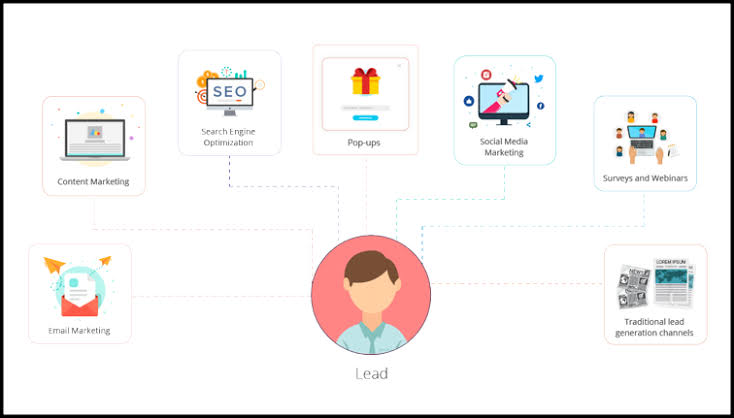
Let’s talk about it more in depth.
Content
You can use amazing content to direct visitors to your landing page.
You provide readers with content that includes graphics, tips and resources. It should be an in depth and actionable guide.
You can add CTAs anywhere within the article.
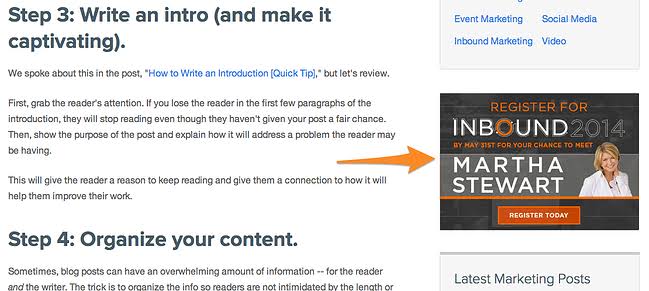
Some places you can include the CTA includes: inline, bottom of the post, the side panel and even in the hero of the post.
The more value you give to a reader in your content, the more likely they are to engage with your CTA and move on to your landing page.
When you already have subscribers, you can reach them via email.
Email is also the best medium to target people who are already aware of your product or service.
It is also much easier for your subscribers to take action since they already know you.
Leads from email are more likely to convert that most marketing channels.
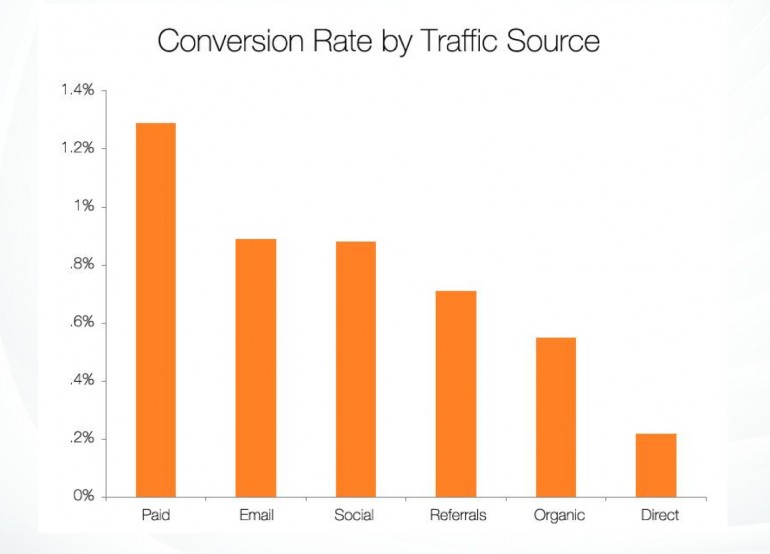
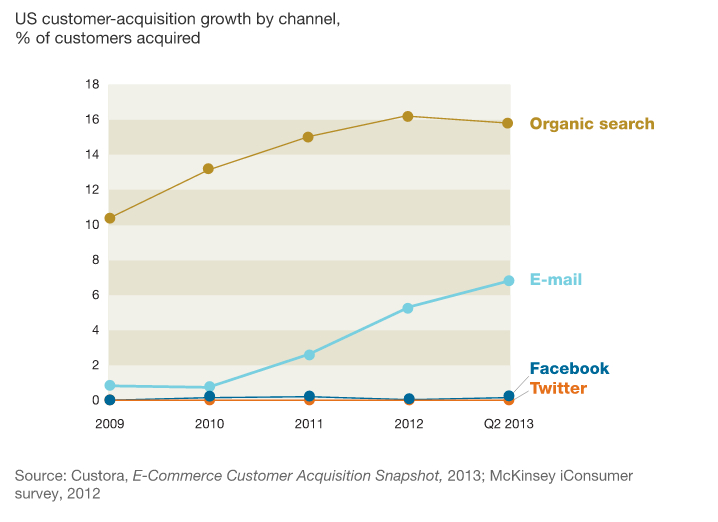
Emails are a bit clustered so you have to ensure that you include a clear CTA button.
If you are small business, it makes sense to find the best email platform for you.
This image from CoShedule should help you in converting leads better using email marketing.
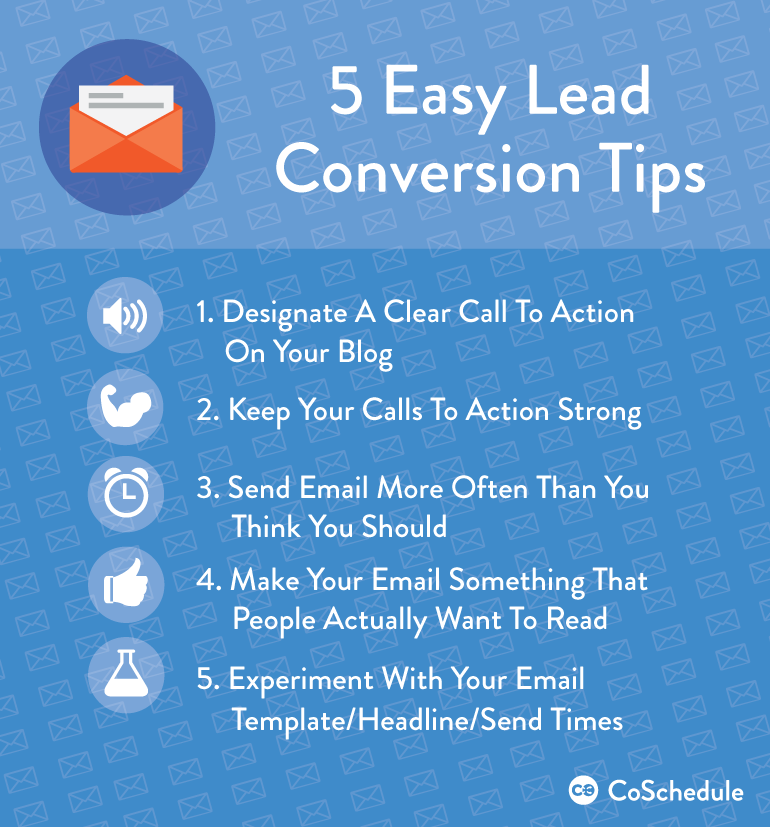
Ads and Retargeting
If your ads are not making people to take an action, then you are doing it wrong.
If you want people to convert, ensure that what you are advertising is the same thing that is being offered in the landing page.

Also make sure that the action you want them to take is clear and not confusing.
Blog
A blog is an amazing tool for generating leads because you can tailor your article to direct visitors to your landing page.
If you are adverting a tool to help increase productivity, you can write and article on productivity systems. This would increase the chances of people engaging with your CTA.
Social Media
You can direct your followers to take an action easily on social media.
From making use of the swipe option on Instagram stories.
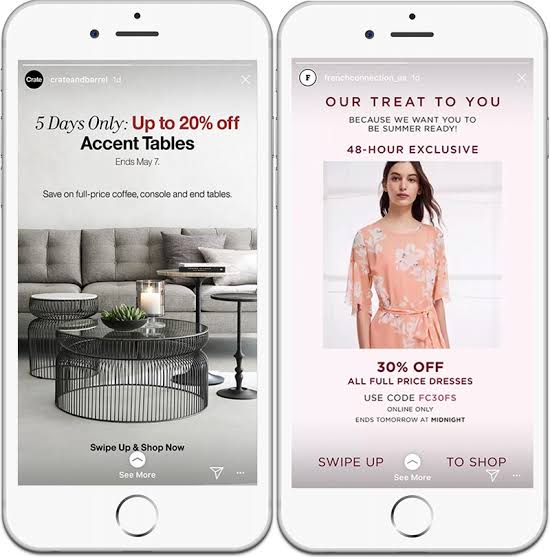
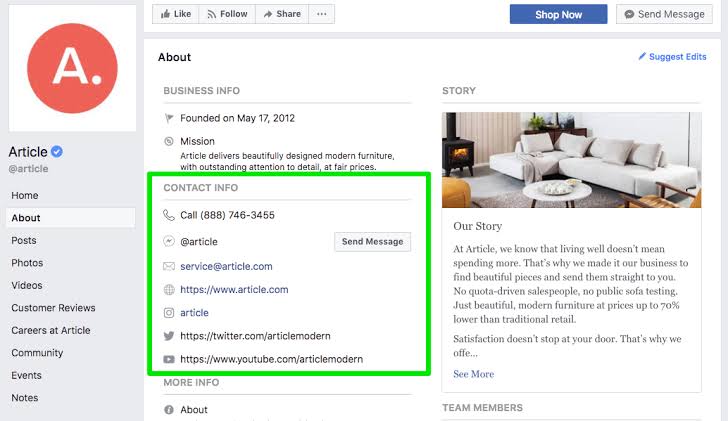

You can also promote things on your social media posts and include a call to action your followers can interact with. If you manage multiple social media accounts, use a social media management tool to streamline your activities.
Product trials
Offering a free trial can help you generate leads faster.
Ahrefs were having a problem getting users for their all purpose tool to audit your website, explore competitors, research keywords & backlinks.
When they created a free backlink checker, they increased their leads and saw more sales.
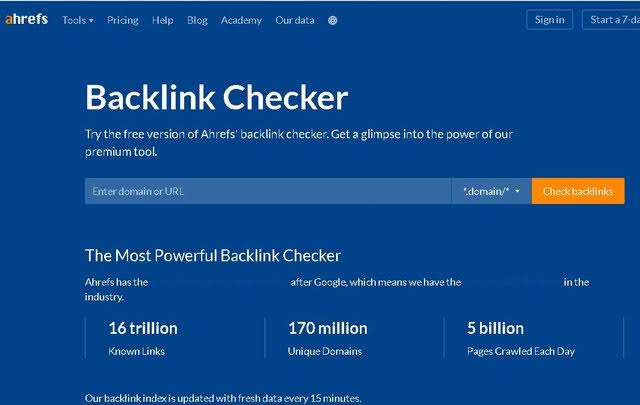
Remember to include your branding in your free products. You gain potential visitors even when they come across your service from other sources.
Referral Marketing
Referral marketing or word of mouth gets your brand in front of more people hence generating more leads for your business.
No matter what channel you use in generating leads, ensure that it leads them to an optimized landing page.
Read more: Guide on the 20+ Best Productivity Apps for School and Work
How To Qualify A Lead
We’ve discussed earlier that a lead is anyone that is interested in making use of your product or service.
Now lets look in depth on how we can qualify an individual as a lead.
The foundation of a lead is through collection of information.
This information could be a person filling in form to download a document or a shopper sharing contact information in exchange for a coupon.
How can you evaluate a lead’s level of interest
These are some of the ways you can qualify an individual as a lead.
Let us look at different scenarios you can use in checking this out:
- Job applications:For an individual to show interest in a job opportunity they would have to offer personal information. If they don’t fill out the application form, you cannot qualify them as a lead but when they do, they are redirected to the recruitment team – not the marketing or sales team.
- Coupon:A coupon would not give as much information as someone who is applying for a job. One way to generate leads from coupons is to ask for their email in return. Even if an email isn’t a lot of information, it still shows their interest in your brand.
- Content:Unlike the job application forms and coupons, you cannot gauge what product or service the lead is directly interested in. To make the best use of content to collect leads, you should ask for for more information in your forms. This would help you determine what product or service they need and also if they are a good fit for your product.
Depending on your company or industry, any one of these resources would be suitable for you.
It is essential that you collect enough information so that you access if the lead is quality and if they are truly interested in your product.
What kind of information should you collect?
- Full name: This is very necessary. You would need this to communicate with the lead. It is important that each correspondence is personalized.
- Email:This is how you would contact your lead.
- Company or Website:This would help you to research your lead and see if they are a suitable fit your company.
- Role:Knowing the role the lead plays in his industry would help you determine how you would interact with them. This is especially important for B2B businesses.
- Location:This would help you with audience targeting. You can segment this by region and time zone.
- State:Knowing their state further helps with conversions. It also helps you qualify them better.
Lead Generation Strategies
Depending on the platform you are planning to use for your marketing strategy, they are several strategies you can use.
This section would show you how you can generate leads:
These are some of the most popular platforms you can use:
Facebook lead generation
Facebook is one of the most popular medium of lead generations.
Here are some demographic statistics to show you why Facebook is good for lead gen marketing:
1. There are 2.1 billion daily active users on Facebook, as of May 2024.
2. Facebook users are accessing the site or app eight times per day on average.
3. Facebook has more than 150 million daily viewers on Stories.
4. 39% of users will follow a Facebook Page in order to receive a special offer.
5. Facebook has a total of 90 million Pages for SMBs.
6. 200 million people have joined Facebook Groups that derive value from.
7. 78% of American consumers say they’ve discovered products on Facebook.
8. 26% of Facebook users who clicked on ads reported making purchases in one survey.
Facebook allows you to add outbound links to your posts and information that you can use in getting visitors to your site or product.
You can easily add call to action buttons on your Facebook page that you can use in directing visitors to your site.
Twitter lead generation
Twitter has a feature called twitter lead gen cards. You can generate leads within a tweet without even having to leave the site.
What would be added to the twitter card would include name, email address and twitter username.
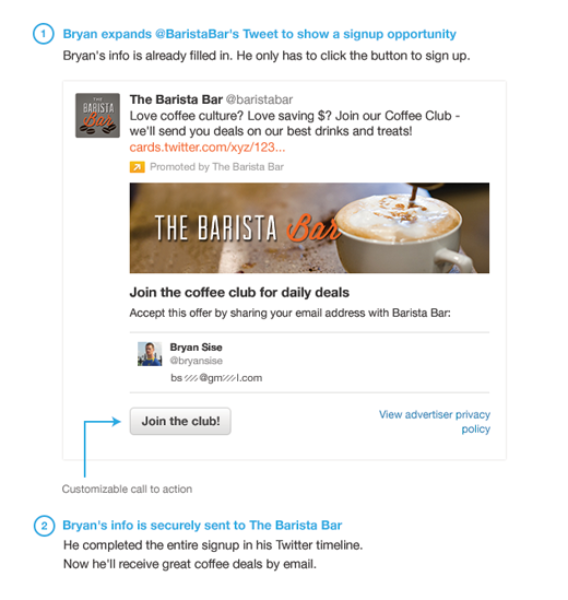
All the readers have to do is to click “submit” and they would become a lead.
LinkedIn lead generation
Like twitter, LinkedIn also has lead gen forms. It immediately auto fills the form with the user profile details when they click on the CTA.

PPC lead generation
These are leads gotten from ads on search engine result pages (SERPSs).
Google gets over 3.5 billion searches and this makes it perfect for ads marketing campaign especially when it comes to lead gen.
These are some of the things you need for a perfect PPC campaign:
- Focus on a specific keyword
- Don’t skip keyword research
- Create multiple landing pages for specific ads for higher optimization.
- Diversify your ads
- Monitor your web pages
Tips to optimize your lead generation campaign
Here are some of the few tips you can use in your lead generation campaign:
1. OptinMonster
You can easily create pop ups with optin monster. You can use this tool to easily collect the contact information of anybody that visits your site.
It also very customizable.
You get to decide when and where the pop ups come up in your site.
You can make use of Mailchimp to collect the emails from the Optin popup forms.
2. Discover.ly
This tool would help you automatically search and collect information from profiles.
All you need is their chrome extension.
If you need an information on a new contact, add their gmail name and you would see a mini profile window on important information you can use to personalize the email.
3. Intercom
With intercom you can instantly interact with visitors on your site.
This tool deploys a chat box so that you can communicate with visitors on your site.
Even if you are not close to your computer, you can set a bot that would automatically collect information for you.
Read more: 10 Tips for a Personalized Workplace for Maximum Productivity
Best practices for lead generation
1. Make sure to collect accurate information
If the information you collect from your form is in accurate, the lead is useless.
If the email you collect is wrong, you won’t be able to contact them.
One way to handle this is by asking the visitor to input their their email address twice for verification.
2. Do proper research
Always do your research before you contact a lead.
Do not just create an email or send out a cold call without any proper research.
The more you research about the brand you are about to pitch for, the easier it would be for you make a sale.
There are several tools you can use in doing customer research like some of those mentioned earlier in this article.
These tools would help you do research easily instead of spending countless hours manually doing it yourself.
3. Use multiple tools
To get the best value from your lead generation campaign, it is best to use multiple tools or platforms.
With different tools you would be able to source for various kinds of information. Some platforms would give you a more detailed information than others.
With different tools you would be able to streamline the process you can use in optimizing the marketing process.
4. Track your progress
You have to track your how successful your lead gen campaign is.
If you don’t track you won’t know if it efficient or not.
Tracking allows you know which areas to change and what to improve on.
If you have access to your metrics, keep a spreadsheet of the contacts you’ve reached out too.
The things you should include in your spreadsheet should include:
- The email address of the lead
- When you first contacted
- How it went
- The progress you’ve made and if you need to contact again.
We have seen the process of generating leads. Now its your turn to go ahead and kill it.
